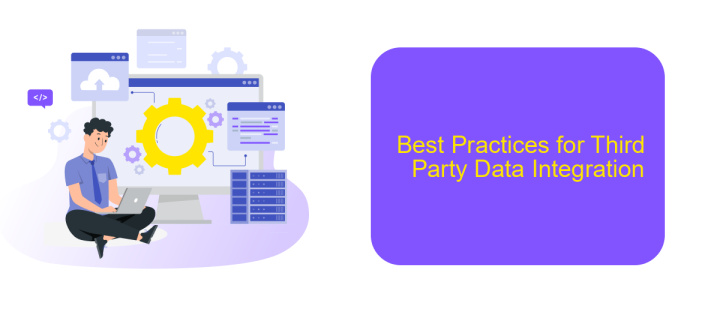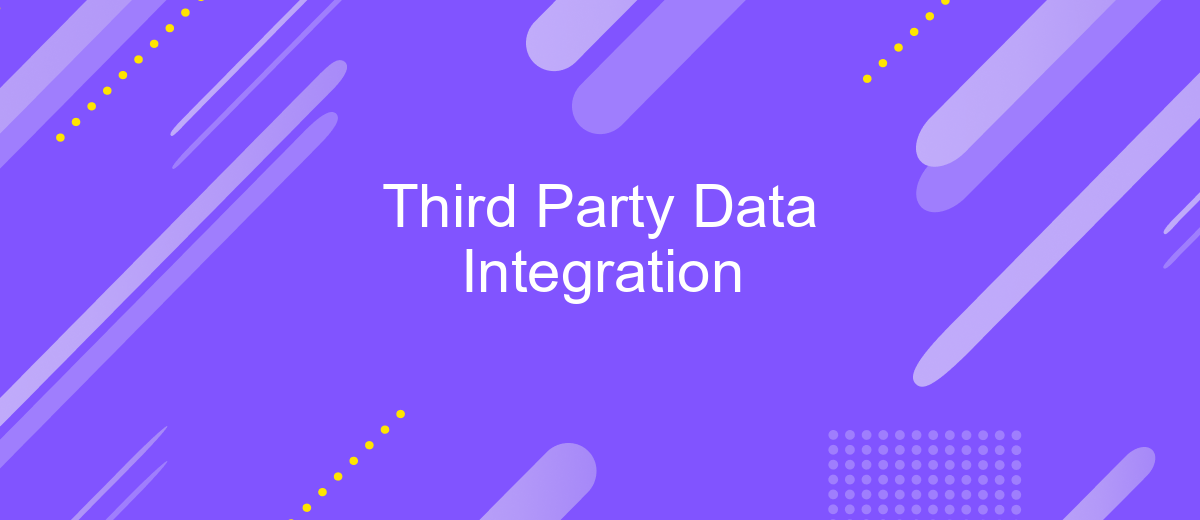Third Party Data Integration
Third-party data integration is a crucial aspect for businesses looking to enhance their data-driven decision-making processes. By incorporating external data sources, companies can gain valuable insights, improve customer experiences, and optimize operations. This article explores the importance of third-party data integration, its benefits, and best practices for effectively leveraging external data to drive business growth and innovation.
Understanding Third Party Data Integration
Third party data integration is the process of importing and managing data from external sources into your own systems. This allows businesses to enhance their datasets, streamline operations, and make more informed decisions. The integration can involve various types of data, such as customer information, transaction records, or social media insights.
- Data Aggregation: Combining data from multiple sources into a single dataset.
- Data Transformation: Converting data into a format that is compatible with your systems.
- Data Synchronization: Ensuring that data is up-to-date across all integrated systems.
- Data Validation: Checking data for accuracy and completeness before integration.
Using tools like ApiX-Drive can simplify the integration process. ApiX-Drive offers a user-friendly interface and supports a wide range of applications, making it easier to connect various data sources without extensive coding. By leveraging such services, businesses can save time and resources while maintaining data integrity and consistency.
Benefits of Third Party Data Integration

Integrating third-party data can significantly enhance the accuracy and depth of business insights. By incorporating external data sources, companies can achieve a more comprehensive understanding of market trends, customer behavior, and operational efficiencies. This enriched data pool allows for better-informed decision-making, leading to improved strategic planning and competitive advantage. Furthermore, third-party data integration can help identify new opportunities and mitigate risks by providing a broader perspective on various business aspects.
Utilizing services like ApiX-Drive simplifies the process of third-party data integration. ApiX-Drive offers seamless connectivity between multiple platforms, automating data transfers and reducing the potential for human error. This not only saves time and resources but also ensures data consistency and reliability. The user-friendly interface and extensive range of supported applications make it an ideal solution for businesses looking to enhance their data integration capabilities without extensive technical expertise. Overall, third-party data integration, facilitated by tools like ApiX-Drive, can drive significant improvements in business performance and innovation.
Challenges of Third Party Data Integration

Integrating third-party data involves several challenges that can hinder seamless data flow and accuracy. Ensuring compatibility between different systems and formats is a primary concern, as mismatched data structures can lead to errors and inefficiencies. Security and privacy issues also arise, particularly when handling sensitive information from multiple sources.
1. Data Compatibility: Different systems often use varying data formats, making integration complex.
2. Security Concerns: Protecting sensitive data during transfer and storage is crucial.
3. Data Quality: Ensuring the accuracy and consistency of integrated data can be challenging.
4. Compliance: Adhering to regulatory standards across different jurisdictions requires careful attention.
5. Scalability: Integrating data from multiple third-party sources can strain existing infrastructure.
Services like ApiX-Drive can mitigate these challenges by offering automated integration solutions that ensure data compatibility and security. By using such platforms, businesses can streamline the integration process, maintain data quality, and comply with regulatory requirements more effectively. ApiX-Drive provides a scalable solution that adapts to the evolving needs of organizations, facilitating more efficient third-party data integration.
Best Practices for Third Party Data Integration

Integrating third-party data can significantly enhance your business operations by providing a more comprehensive view of your data landscape. However, it's crucial to adhere to best practices to ensure seamless and secure integration.
First, always validate the data you receive from third-party sources to ensure its accuracy and relevance. This step is fundamental to maintaining data integrity and making informed business decisions. Additionally, establishing clear data governance policies will help manage data quality and compliance.
- Utilize reliable integration platforms like ApiX-Drive to automate data transfers and reduce manual errors.
- Ensure data security by implementing robust encryption methods and access controls.
- Regularly monitor and audit data flows to identify and resolve any discrepancies promptly.
- Document all integration processes for future reference and troubleshooting.
By following these best practices, you can optimize your third-party data integration efforts, resulting in more efficient operations and better decision-making. Platforms like ApiX-Drive simplify the integration process, allowing you to focus on leveraging the data to drive business growth.
- Automate the work of an online store or landing
- Empower through integration
- Don't spend money on programmers and integrators
- Save time by automating routine tasks
Conclusion
In conclusion, Third Party Data Integration plays a pivotal role in enhancing the efficiency and effectiveness of modern business operations. By seamlessly connecting disparate data sources, organizations can gain a comprehensive view of their data, leading to more informed decision-making and streamlined processes. The ability to integrate data from various third-party platforms not only simplifies data management but also fosters innovation and agility in an ever-evolving digital landscape.
Services like ApiX-Drive facilitate this integration by providing user-friendly tools that automate and simplify the process. With ApiX-Drive, businesses can effortlessly connect multiple applications and data sources without the need for extensive technical expertise. This not only saves time and resources but also ensures that data is consistently accurate and up-to-date. As the demand for seamless data integration continues to grow, leveraging such services will be crucial for businesses aiming to maintain a competitive edge and drive sustainable growth.
FAQ
What is third-party data integration?
Why is third-party data integration important for businesses?
What are the common challenges faced during third-party data integration?
How can I automate third-party data integration processes?
What security measures should be taken when integrating third-party data?
Apix-Drive is a simple and efficient system connector that will help you automate routine tasks and optimize business processes. You can save time and money, direct these resources to more important purposes. Test ApiX-Drive and make sure that this tool will relieve your employees and after 5 minutes of settings your business will start working faster.


